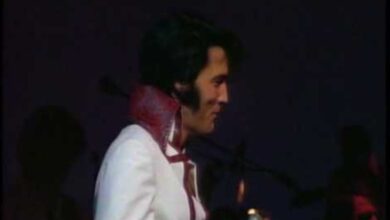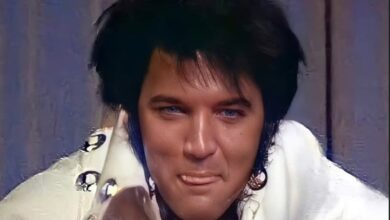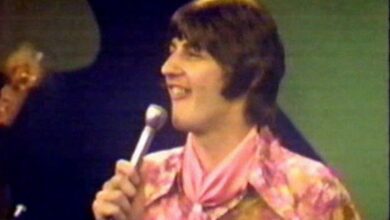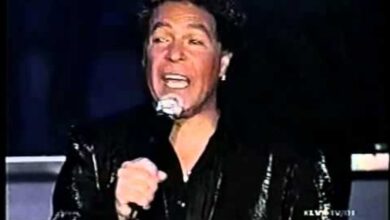The Hollies’ ‘Bus Stop’ Takes the British Invasion to New Heights in 1966
By the mid-1960s, The Hollies had already established themselves as one of Britain’s premier pop-rock bands, known for their tight harmonies and infectious melodies. But in 1966, Bus Stop catapulted them to new levels of international success, marking a turning point in their career. Released as a single in June of that year, the song climbed the charts quickly, reaching No. 5 on the U.K. Singles Chart and becoming their first major hit in the United States, peaking at No. 5 on the Billboard Hot 100. With its catchy tune and narrative-driven lyrics, Bus Stop became one of the defining songs of the British Invasion.
The Hollies, formed in Manchester in the early 1960s, were led by Allan Clarke (vocals), Graham Nash (rhythm guitar and vocals), Tony Hicks (lead guitar and vocals), Eric Haydock (bass), and Bobby Elliott (drums). Unlike some of their contemporaries, The Hollies carved out a distinct identity with their blend of pop and rock, characterized by crisp instrumentation and rich vocal harmonies. Their sound was polished, yet still energetic enough to stand alongside the likes of The Beatles and The Rolling Stones in the British Invasion movement.
Unlike many of The Hollies’ previous songs, which were largely self-penned by Clarke, Nash, and Hicks, Bus Stop was written by budding songwriter Graham Gouldman, who would later find fame as a member of 10cc. At the time, Gouldman was just beginning to make a name for himself, having already written hits for The Yardbirds (For Your Love) and Herman’s Hermits (No Milk Today). He was just 19 years old when he penned Bus Stop, and The Hollies immediately recognized its potential, transforming it into one of their most enduring classics.
The song tells a charming story of a budding romance that begins at a bus stop during a rainy day. With its conversational lyrics, it captures the excitement of a newfound love blossoming in the most everyday of circumstances. Unlike many love songs of the era, Bus Stop follows a complete narrative arc, concluding with the couple getting married. This storytelling approach gave the song a unique appeal, making it stand out in the pop landscape of 1966.
Produced by Ron Richards, Bus Stop was recorded at EMI Studios (later known as Abbey Road Studios), where many of the great British Invasion hits were crafted. The track is built around a bright, jangly guitar riff that carries the melody, with Clarke’s lead vocals effortlessly blending with the lush harmonies of Nash and Hicks. The arrangement is deceptively simple, yet meticulously crafted, with Bobby Elliott’s crisp drumming adding to the song’s rhythmic drive. The three-part harmonies—a Hollies trademark—elevated the track to something more than just a standard pop song.
Upon release, Bus Stop was met with widespread acclaim. It solidified The Hollies’ reputation not only in the U.K. but also in the U.S., where they had been trying to break through. The song’s transatlantic success opened doors for the band to embark on extensive tours in North America, helping them reach new audiences and compete with the other British heavyweights dominating the charts at the time.
Culturally, Bus Stop marked an important moment in pop music. The song’s sophisticated arrangement and strong narrative helped bridge the gap between simple rock and roll love songs and the more elaborate storytelling techniques that would become more prominent in late ‘60s pop and rock. It also demonstrated that a song didn’t have to rely on heartbreak or rebellion to resonate with audiences—sometimes, a charming story and an irresistible melody were all that was needed.
For The Hollies, the success of Bus Stop propelled them into the upper echelon of pop bands. It helped define their identity as master craftsmen of catchy, well-produced pop music. While many bands of the British Invasion had a rougher, blues-based sound, The Hollies leaned more into pop sensibilities, setting them apart and ensuring their longevity.
The influence of Bus Stop extended beyond The Hollies. The song became a favorite among musicians and has been covered by artists across genres. Herman’s Hermits, whose own career was similar in style to The Hollies, recorded a version, as did American singer Gene Pitney. Later, The Hollies themselves re-recorded the song for a compilation album in the 1980s, proving its enduring appeal.
The song’s success came at a pivotal time for the band. Not long after, Graham Nash would begin to feel the pull of the American folk-rock movement, leading to creative tensions within The Hollies. By 1968, Nash had left the band to form Crosby, Stills & Nash, a move that reshaped both his career and the trajectory of The Hollies. Despite this, the band continued to record and release hits, ensuring their place in rock history.
Over the decades, Bus Stop has maintained its status as one of the defining songs of the 1960s. Its continued presence on oldies stations, movie soundtracks, and pop culture references demonstrates its lasting appeal. While The Hollies would go on to record many more hits, including Carrie Anne and The Air That I Breathe, Bus Stop remains one of their most iconic songs, a testament to the power of well-crafted pop music.
Looking back, Bus Stop is more than just a hit single; it’s a reminder of an era when pop music was undergoing a rapid transformation. The Hollies, with their impeccable harmonies and finely tuned songwriting, helped shape the sound of the decade. Their ability to merge storytelling with catchy melodies set them apart, and Bus Stop remains a shining example of their artistry.
In the grand tapestry of 1960s music, Bus Stop stands as a quintessential piece of the British Invasion, capturing the excitement and optimism of the era. It’s a song that, even today, evokes a sense of nostalgia and timeless charm—one that will likely continue to delight listeners for generations to come.



